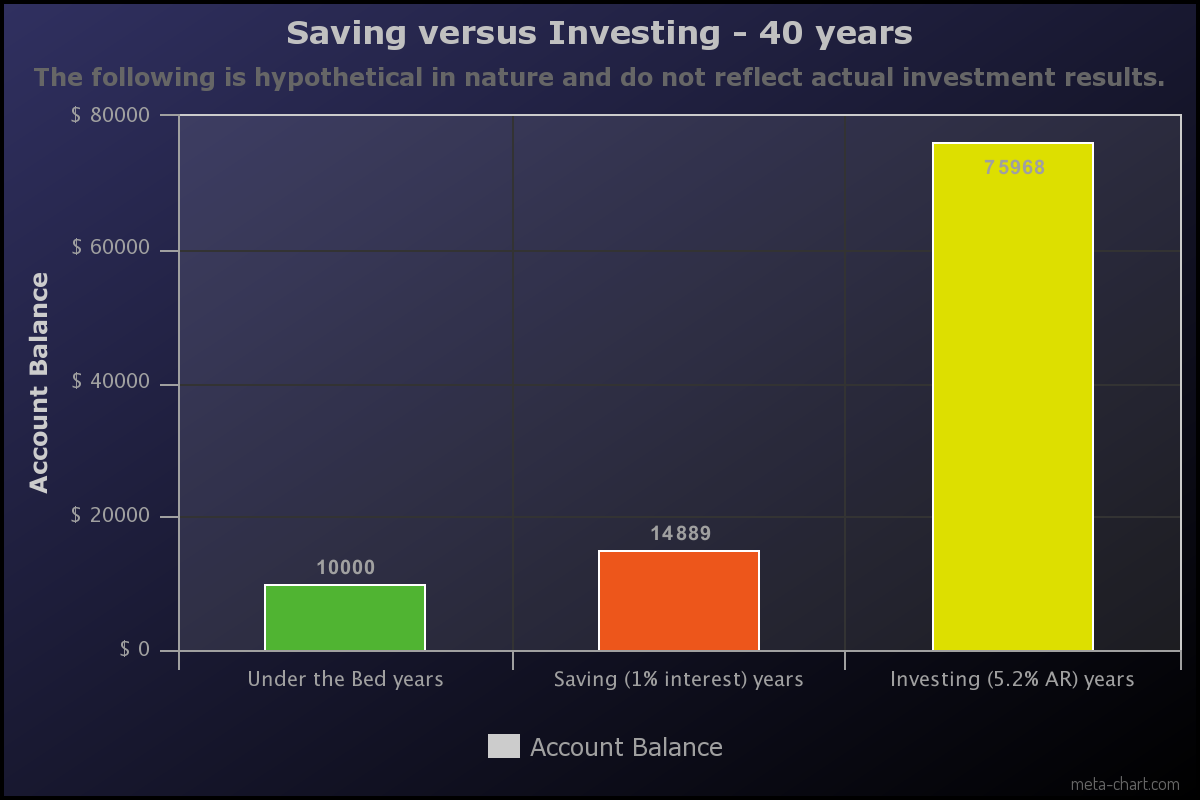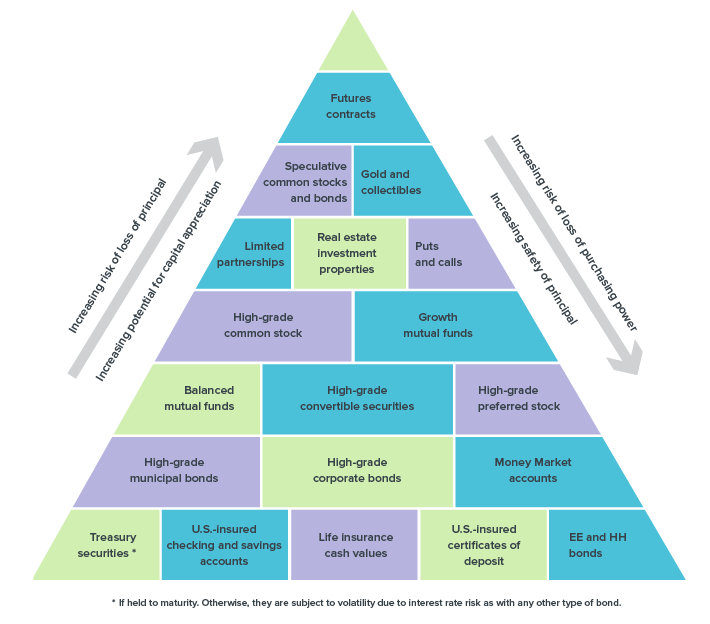Below is an image of what your account would look like if you just save versus invest your money.

Looking at the image above, you can clearly see that socking your money away returns zero growth. You can invest your money in other areas such as a savings account, bonds, stocks, real estate, etc. The above assumes that those investment strategies provided you with a return on your investment.
Saving is important. Warrent Buffet said "Do not save what is left after spending, but spend what is left after saving". But can you do more than just save that money away under your bed? Yes, you can. This is where investing comes in.
Before you invest
Before you start your investment strategy, you should consider these areas of importance:
1. Do you have a financial roadmap defined?
You need to be able to figure out your goals and risk tolerance. Either by yourself or with a financial professional. You have to keep this in mind. There is no gurantee that you will be profitable in your investment endeavors. But to be successful, you need to understand your current financial situation and plan for now and into the future.
2. Do you have high credit card debt or loan?
Do you owe money? Do you owe money on high-interest credit cards or loans, then the most prudent thing you want to do is first pay off the balances. Why do you ask? Because it's the debt that's charging you the most interest! Credit cards with higher-than-average APRs can be especially hard to pay off, and anyone with a student loan or mortgage knows the frustration of making money monthly payments that only go towards the interest, not the principal.
3. Do you have an emergency fund?
When you least expect it, life can throw you a curveball. Layoffs, recessions, natural disasters, health issues - you do not want to be on the other end where you do not have some form of emergency savings that can cover your cost. Any financial advisor will tell you that having up to six months of income in savings will help reduce your risk of total financial ruin. Why do you ask? Because disaster or life-changing events can hit you when you least expect it.
4. Portfolio rebalancing
If you already have a portfolio, review your portfolio from time to time. Rebalancing allows you to review your current risk and evaluate to see where you may have imbalances in some asset categories.
Investing and Inflation
While considering your investment strategy, you must also be mindful of inflation. Inflation is an economic concept that can have a direct effect on your investment. Inflation can affect stock market returns, outpace savings interest rates, and reduce your purchasing power during retirement. Inflation is the percentage increase in the cost of goods and services over time. The image below from Investopedia illustrates how the cost of a cup of coffee has increased over a 49 year period.
But to start investing, you have to start saving.

So, the key here is to start saving right away. Even saving spare change gets you into the habit of saving your hard-earned money. It all adds up over time. It will allow you to start investing in other areas to increase your wealth.
You need to understand how much risk you're willing to take and which types of risk most worry you. This is considered your personal risk tolerance. In other words, how much of your investment are you willing to lose before you see potential rewards? If you have not taken care of the items discussed in "Before you invest", then you most likely will have a very low-risk tolerance.
Before deciding where to invest, you’ll need to first assess your personal risk tolerance. This is a fancy way of saying how much of your investment you can really afford to lose. If you need money for next month’s rent, you have a very low-risk tolerance.
If your life wouldn’t be materially affected in any way, if rather than investing money, you set fire to it, your risk tolerance is through the roof.
Below is an image of the Investment Pyramid. It defines Risk\Return Trade-offs. Less risky investments are at the bottom of the pyramid.

Some examples of low-risk investments are saving accounts and bonds. The caveat in this is that they offer lower rates of return.
Diversification
One of the most important principles of investing is to ensure you have a diversified portfolio. Bonds, stocks and real estate, etc. By spreading your capital amongst various investment vehicles, you are not reliant upon any single investment for all of your returns.
2 key advantages of diversification are below:
- Minimize the risk of loss. Having one investment perform poorly over a certain period while others are performing better helps to augment your losses in your portfolio.
- Generating returns. Some investments do not perform as expected. Having other investments in your toolbox helps to mitigate this.




